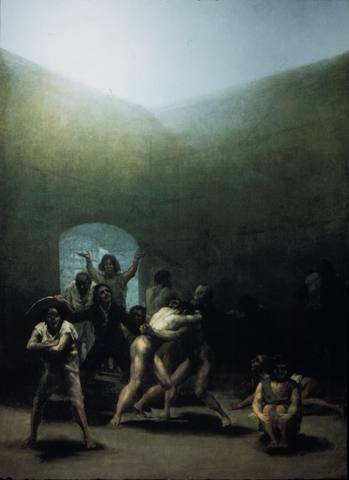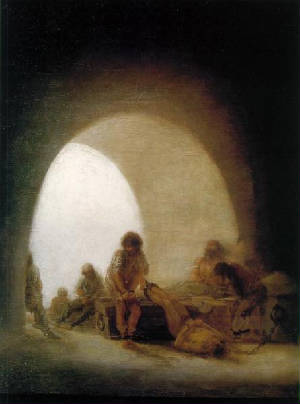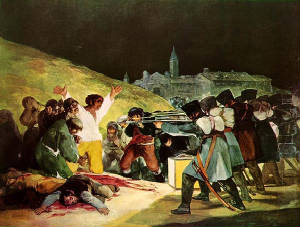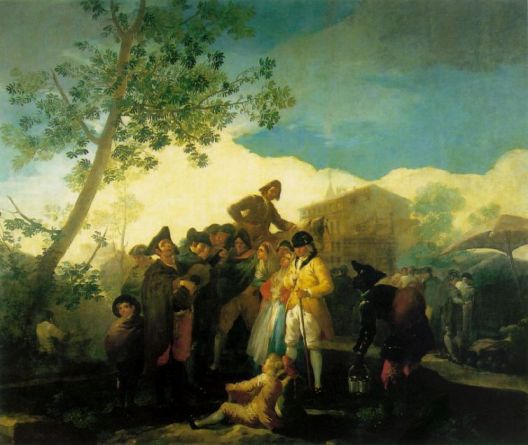
|

|
Francisco de Goya
Life: 1746-1828
Country:
Spain
Style: Romanticism
Works: Blind Guitarist (1778)
Yard with Lunatics (1793)
The Executions of the Third of May (1808)
Prison Interior (1810)
Quote: "Fantasy, abandoned by reason, produces impossible monsters; united with it,
she is the mother of the arts and the origin of marvels."
Fun Fact: Manet’s Execution of Maximilian (1867) is a direct reach
to Goya’s The Executions of the Third of May (1808) (4).

|
| Yard with Lunatics (1793) |

|
| Prison Interior (1810) |
|

|

|

|

|

|

|
| The Executions of the Third of May (1808) |
Back to Spain--Madrid this time. You recall that Goya was born in the Spanish town
of Zaragoza but that at the age of 17 he moved to Madrid.
You have seen many of his paintings and think that some are beautiful, but others are comical in how simple they seem even
though they have won him so much fame. Like, The Third of May? You think that a twelve year old would have been able
to do something of that caliber using crayons. I mean, it’s not even like it’s beautiful like the English Romantic,
William Turner’s works. Its just…simplistic. Plus, it’s obvious that the people aren’t real…at
least Turner thought to shroud his paintings in a realistic mist. Much more believable. Of course, Goya’s works do have
more of a symbolist element—the church shrouded in darkness and all. But still—a child could have done just as
well with the Third of May. If you think about it, even the symbolism itself is kind of obvious. Oh well…it’s
not like you’re some famous art critic, or anything like that, so you should just get over it.
“Don’t say anything,” Goya
says as soon as

|
| Blind Guitarist (1778) |
he sees you,
“I’ve talked with Dali and I know what your whole big ‘quest’ thingy is about, and although I’m
very sorry, I can’t help you. Now, when I first came to Madrid, there were two painters here who influenced my style. One was the last of the great
Venetian painters, Tiepolo…and the other one was the neo-classical painter, Raphael Mengs (1). I suggest that you try
one of those two. But please don’t tell them that it was me who sent you. See, in 1763, I entered a competition at the
Royal Academy of San Fernando and lost(1)…and ever since then, I’ve had this thing with those two…you know,
they were pissed that I had ruined their image since I was supposed to be the next great prodigy and carry on their legacy.
And I was pissed that their influence didn’t help me. So…just go ask them and don’t tell them who sent you.”
Giambattista Tiepolo
Antonio Raphael Mengs
|

|

|

